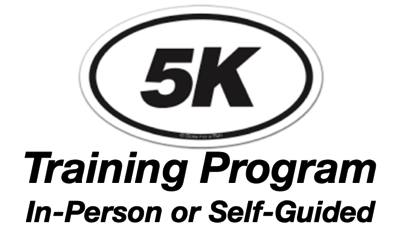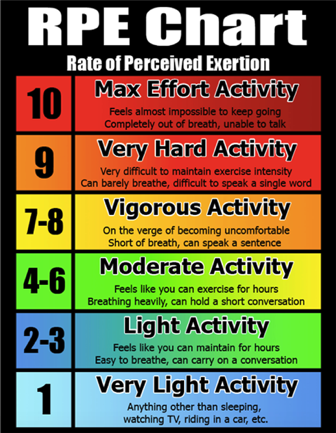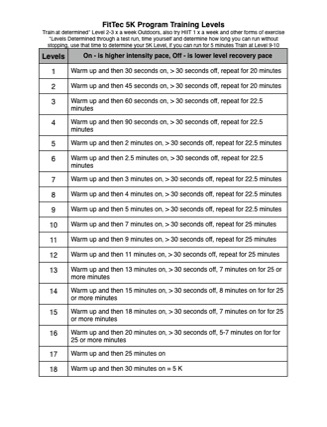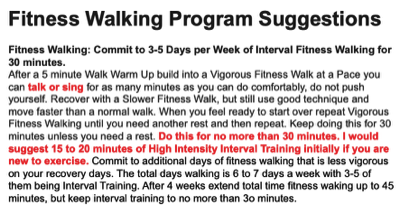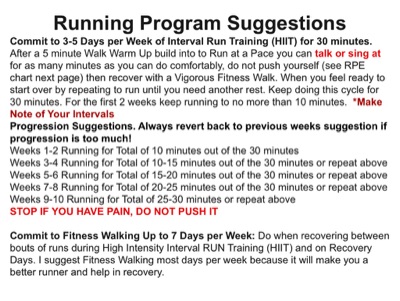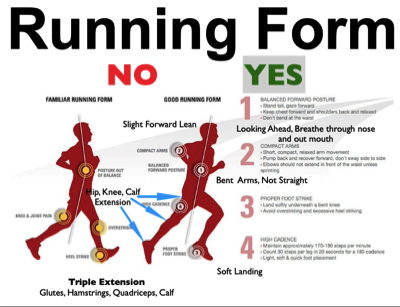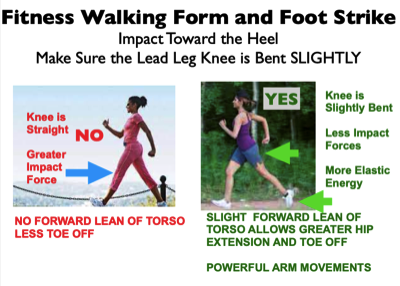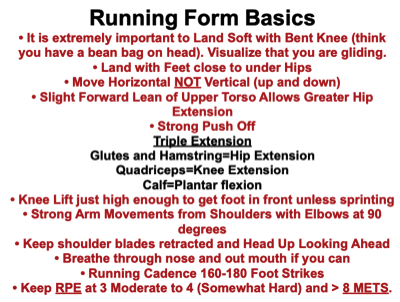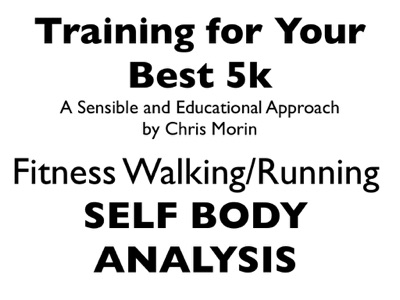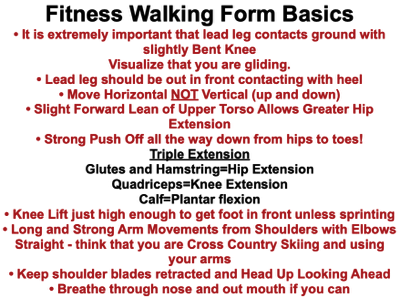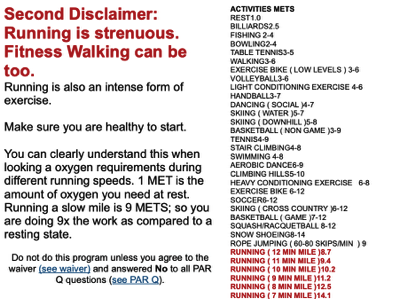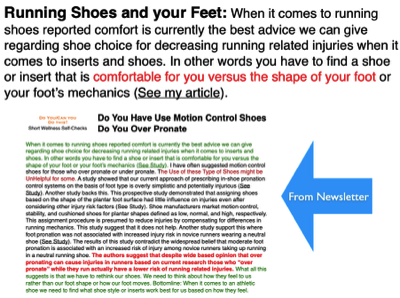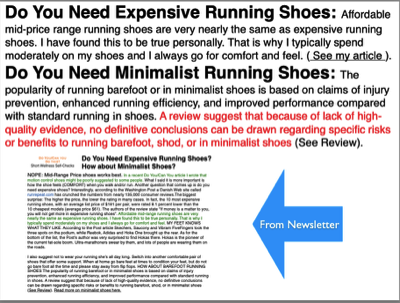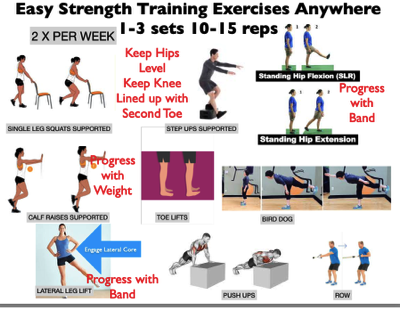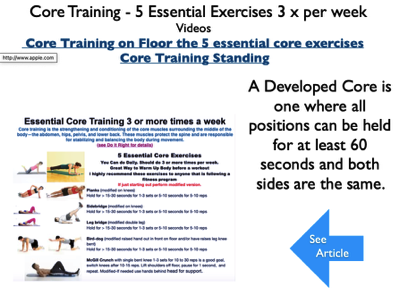We are here to help you reach your goal of being able to walk/run a 5K injury and pain-free.
We have an in depth knowledge of conditioning and injury prevention to help you fitness walk and/or run your first 5k. Fitness walking (power walking) is highlighted in this program. It is so healthy for you to do and it will make you a better runner (see why). Mostly anyone in good health can do this program.
To get started with our self-guided program see below: Where to Start: Follow these 10 Steps
For in person 5K Coaching: email us at fittec@me.com to start your individualized training program. We will discuss all the steps below and evaluate your shoes, form, and do a quick body analysis. We will also have you fill out a weekly log and read over educational material.
Do not start this program without agreeing to the waiver (see waiver) and are cleared to exercise by going over a PAR Q (see PAR Q).


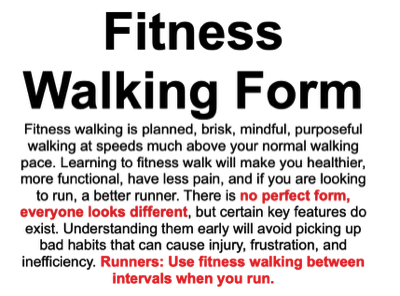
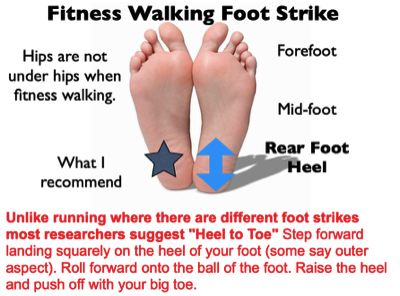
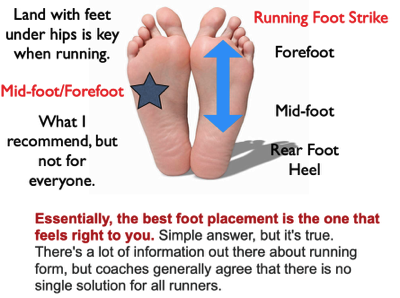
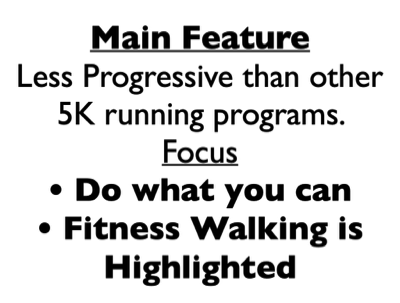
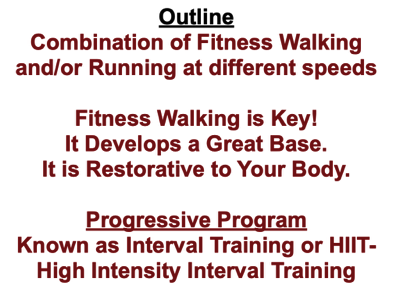
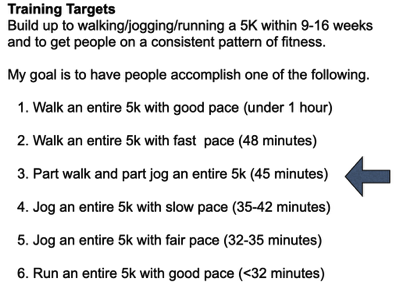
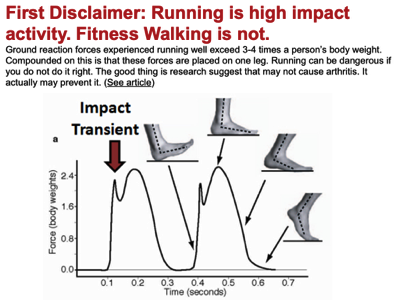
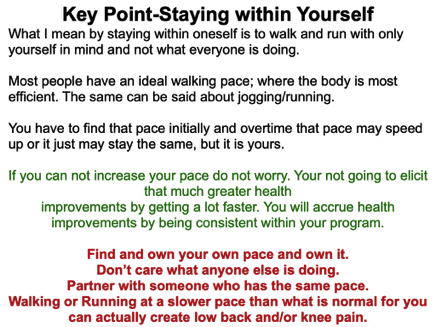
Where to Start: Follow these 10 Steps
First: Get Educated!
Read over our summary material (first 2 pages) or watch our short video or look over our complete lecture. Knowledge will lead you to successful pain-free fitness!
Second: Test Your Yourself - Form and Shoes
First warm-up by walking for a few minutes and then speed up to a fast fitness walk/slow run for as long as you can comfortably do without stopping and make note of the time. Walk again till you're ready to speed up again, make note of the rest interval, and then repeat a fast fitness walk /slow run for as long as you can without stopping and make note of that time. Do not push yourself. Just do what you can do. See log to report trial run.
Shoes.
Make note how you felt in your shoes. You may need to find the right pair of shoes (see below).
Form
Make note on your run form. Did you: bounce, take short or long strides, how did your feet hit the ground, could you hear your foot hit the ground.
Levels
If you like determine your Training Level (see levels).
Third: Find the Right Shoes
Running Shoes 101: Your feet are important!
• If Your Shoes are Old Get New Shoes!
• Do not start running with old shoes.
• Find a shoe that is comfortable for you versus the shape of your foot or your foot’s mechanics. Use your initial test run to determine comfort.
• If you wear orthotics you can use a regular running shoe if you wear your orthotics. Make sure you bring your orthotics when trying on new shoes.
• Affordable mid-price range running shoes are very nearly the same as expensive running shoes.
• Try on new shoes during the midday when the foot is at its largest. You should have a thumbnail's length of extra space in the toe box.
• If you are new to running stay away from minimalist shoes and barefoot running for now or maybe forever.
• Replace shoes every 300 to 500 miles. Running shoes with regular use last 3-4 months.
• You may need specific shoes based on your feet, knees, and hips, but research does not say that it matters as much as they thought. It is more important that your shoes feel comfortable when you run. I used to wear expensive run shoes, but I found out Sketchers were worked best for me. See more here.
Fourth: Find the Right Intensity!
How hard should you work when fitness walking/ running?
Simply work at an intensity that does not push you too much!
A lot of people use heart rate to judge intensity, which is great, but everyones maximum heart rate is different and is variable.
Therefore, I suggest using RPE (rating of perceived exertion - see chart) and the talk test instead. What does that mean? When fitness walking or running your overall body sensation of exertion should be moderate to somewhat hard level (RPE of 4-6). That is where you can still talk, but it would be a short conversation. When doing a low interval stay in the GREEN (RPE-4) and when doing a high interval go into the ORANGE (RPE=6+) at times. Measure your heart rate within the 4-6 RPE range and use that range as another way to monitor yourself.
Sixth: Follow a Program
There are many 5k Programs.
I suggest the following.
For Runners: Run Training with Fitness Walking Program
For Walkers: Fitness Walking Program. See log.
Seventh: Work on having your Best Fitness Walking and/or Running Form with every stride!
• Learn how to fitness/power walk (see). Do it whenever you can when walking. It is one of the best things you can do for your body. If you are runner power walking will make you a better runner (see why).
• Be mindful with every stride!
• Your foot should land directly under your body with every step when running. When fitness walking foot should be out in front.
• Steps should be quick, light, and even
• No Bouncing, that is wasted Motion
• Move straight ahead, not much if any vertical displacement
• Lead knee should be slightly flexed so that it can bend naturally on impact - absorbs impact.
• Do not over stride
• Do not heel strike, unless Fitness Walking.
• Ground contact should be mid- foot toward ball of foot with Running and Heel to Toe with Walking
• Lift your knee high enough to get in front
• If your lower leg (below the knee) extends out in front of your body your stride is too long of a stride if running. That is not the case with Fitness Walking. It should be out in fron t of you.
• Drive right from ground contact to toe off using gluteal muscles (aka buttocks, glutes). Think of your glutes as the prime muscles of propulsion. Most people do not use their glutes enough. Also, use your quadriceps and hamstring as you push back. Use your calf muscles at toe off.
• Look straight ahead, keeping upper body loose, with arms bent swinging back strong with fist not clenched while running.
• When Fitness Walking use long, strong arm movements like you are Nordic Skiing.
See Great Youtube Video on Running Form
Eighth: I would suggest performing our Running Body Analysis to see if you need specific exercises or stretches to support your running (see file)
Ninth: Condition Your Body to Support Your Running and to become more fit! It will make you a better runner! See Sample Strength and Core Program. To prevent injury and improve performance you need to strengthen your muscle. Running alone will not achieve the same results (see article for more details).
Tenth: Listen to your body.
• Remember to do what you can do.
• Do not worry how fast others are going.
• Repeat previous training weeks goals if new weeks goals are too much.
• Do not Run through pain - Stop an assess your pain.
Make an appointment with Chris.
I would suggest making an appointment with me so I can watch your run form, do some assessments, and make sure you are on the right track. Email us for Appt.
Happy Walking and Running!
Remember: Exercise should elevate health, not deflate it.
Right Column Excerpts from our Slideshow
